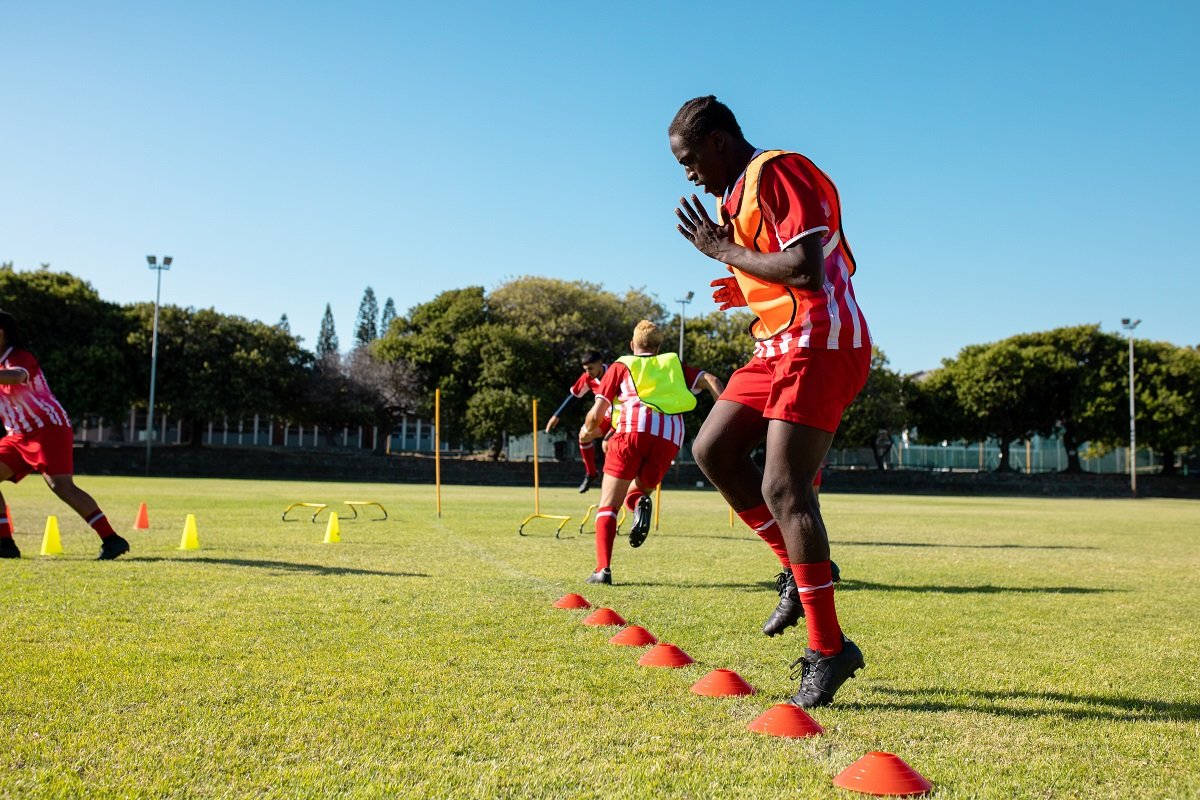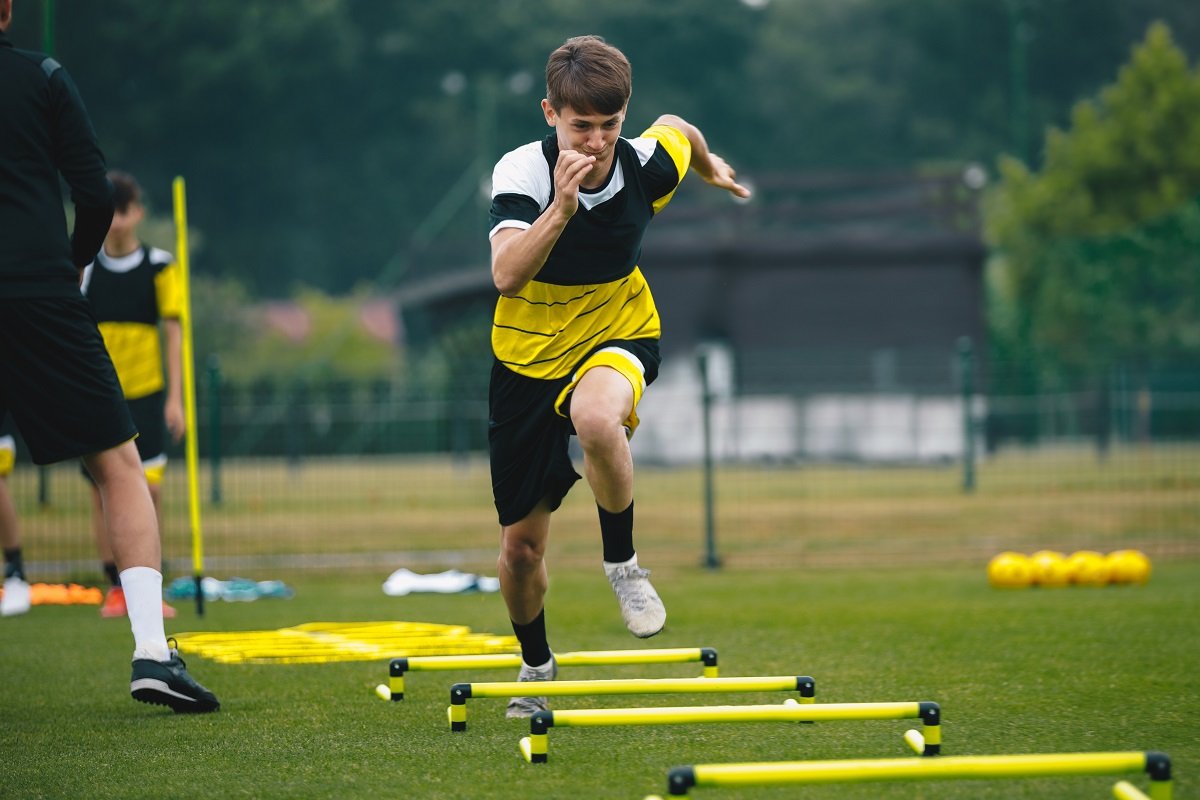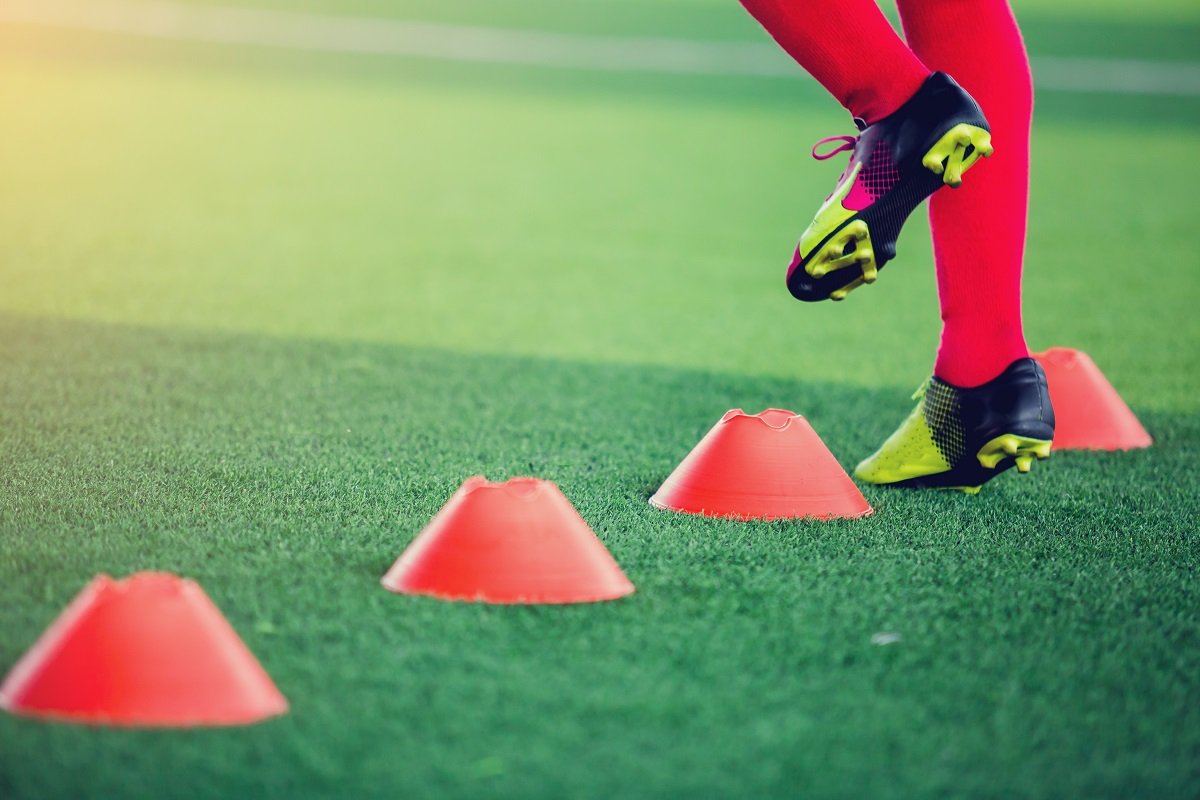
Speed and agility are critical skills for football players in all positions on the pitch. For example, a striker is incredibly deadly when using agility to zig-zag through the backline, and a defender is a fearsome opponent when exhibiting great acceleration to get to the ball before a forward.
As these qualities enhance both offensive and defensive play in numerous ways, in this guide, we are going to highlight the best football speed and agility drills to help players improve in these areas. Before we do, however, let us examine these attributes further.
Why is speed important in football?
The role of speed is invaluable in various parts of the game, especially in modern football, where the game is played at an incredibly high pace by world-class athletes.
Fundamentally, speed enables players to get to the ball faster, whether in making offensive runs or defending against quick attackers. However, there are different types of speed that can be utilised on the pitch.
There is a significant difference between sprinting speed (a player’s top-end speed) and acceleration (a burst of pace allowing players to get up to speed quickly). In some ways, acceleration is more important as a player who is slow off the mark might have little chance to display their top-end speed. But a player with electric acceleration will be feared everywhere on the pitch, particularly in tight areas.
It should be noted that speed not only helps in straight-line sprints but is also invaluable in repositioning around the field, creating opportunities, and closing down spaces.
Why is agility important in football?
Agility plays a vital role in executing dynamic movements on the pitch. At its essence, agility in football is the ability to quickly change direction without losing balance or control.
When it comes to the attacking side, agility allows players to dodge defenders, shift body positions quickly, and react to unpredictable ball movements. An agile front line of nimble and athletic forwards will be a nightmare to any defence.
Defenders should also exhibit agility to great effect, allowing them to track fast-moving attackers or make subtle movements during set pieces. Midfielders also rely on agility to control the ball in tight spaces.
Essential components of football speed and agility training
There are numerous physical aspects that contribute to a football player’s speed and agility.
- Strength: Building leg and core strength is key to faster running and quicker directional changes.
- Coordination: Neuromuscular coordination is important for precise movements.
- Flexibility: Increasing flexibility plays a role in preventing injuries and allowing fluid motion.
- Endurance: Endurance training supports prolonged, high-speed performance during matches.
Top 5 football speed drills and exercises

Improving your speed on the football pitch requires targeted drills to develop your acceleration, maximum velocity, and explosive power. Here are five essential football speed training exercises that will help you become quicker, more powerful, and more efficient in your movements.
1. Sprint drills
Short, intense sprints help improve your ability to accelerate quickly. Set up two cones 10-20 meters apart and perform repeated sprints between them, focusing on quick bursts of speed. Aim for 4-6 sprints with a 30-second rest between each set.
How it helps: This training drill improves your acceleration, a crucial aspect of beating defenders or closing down attackers during a match.
2. Resistance runs
Adding resistance builds leg power and strength. Use a speed parachute or resistance bands around your waist to create drag as you run. Perform five to eight sets of 20–30-meter sprints with the resistance gear, followed by a set of regular sprints without resistance.
How it helps: The extra resistance builds strength in your lower body, leading to faster sprinting when the resistance is removed.
3. Hill sprints
Running uphill forces you to work harder and engages more muscles in your legs and core, developing explosive strength. Find a hill with a moderate incline and sprint up for 10-15 seconds, then walk back down to recover. Repeat this 6-10 times.
How it helps: Hill sprints build the explosive power needed for quick starts and acceleration on flat ground.
4. Bounding
Bounding involves taking long, exaggerated strides while running forward, focusing on height and distance with each step. This drill mimics the powerful, long strides needed in a sprint. Perform three sets of 20-30 meters with a rest in between.
How it helps: Bounding develops power and force in your legs, helping you maximise each stride during a sprint.
5. Ladder drills for speed
Ladder drills are one of the best speed drills in football, improving both footwork and acceleration. The “single-leg run” drill or the “two-feet in each box” drill helps increase your stride frequency and sprinting efficiency. Using an agility ladder, perform each drill as fast as possible for 30 seconds, resting 30 seconds between sets.
How it helps: This drill enhances your foot speed and quickness, which are key factors in reducing the time it takes to reach top sprinting speed.
Top 5 football agility drills and exercises

Agility is the ability to change direction quickly and effectively, a vital skill for football players who need to navigate tight spaces, evade defenders, and maintain balance at high speeds. Below are five agility exercises for football designed to enhance your quickness, coordination, and control on the pitch.
1. T-drill or the 5-10-5 drill
Cone drills help improve directional changes and footwork. Try the T-Drill by setting up four cones in a “T” shape, then sprint from the base of the "T" to the top, shuffle laterally to both sides and then backpedal to the starting point. The 5-10-5 drill is similar: sprint five meters to one side, back to the centre, and then 10 meters to the other side, finishing with another five meters back to the start.
How it helps: These drills improve your lateral movement, turning ability, and the speed at which you can change directions—all critical for outmanoeuvring opponents.
2. Ladder drills for agility
Ladder drills are excellent for improving fast footwork, coordination, and body control. Exercises like the “Icky Shuffle” or “Lateral Quick Feet” involve moving through the ladder’s squares as quickly as possible without touching the sides. Perform each drill for 30-45 seconds, focusing on keeping your movements light and quick.
How it helps: These drills help build fast footwork and enhance your ability to react quickly to changes in direction, a crucial skill when dodging tackles or reacting to sudden movements during a game.
3. Zigzag runs
Zigzag runs mimic the sharp changes in direction you’ll face on the football pitch. Set up cones or markers in a zigzag pattern, spaced about 5-7 meters apart. Sprint from cone to cone, cutting sharply around each one. Repeat this drill 4-6 times, focusing on tight, controlled movements around the cones.
How it helps: Zigzag runs improve your balance when moving at speed, making you more effective in one-on-one situations or when tracking quick-moving attackers.
4. Plyometric jumping
Plyometric exercises like box jumps or lateral bounds help develop explosive leg power, balance, and coordination. For box jumps, jump from the ground onto a box or elevated platform, focusing on explosive force. For lateral bounds, jump sideways from one foot to the other, simulating quick lateral movements. Perform three sets of 10-12 jumps.
How it helps: These exercises increase your explosive power and quickness, which are essential for sharp directional changes and maintaining control when moving at high speeds.
5. Shuttle runs
Shuttle runs involve sprinting back and forth between two cones or markers spaced 5-10 meters apart. Focus on making sharp turns at each cone and sprinting explosively in the opposite direction. Perform this drill for four to six sets, with 30-second rests in between.
How it helps: Shuttle runs improve acceleration, deceleration, and directional agility—helping you to stay sharp in fast-paced situations, whether you’re chasing down an opponent or breaking away in a counterattack.
Training equipment to enhance speed and agility
There is a range of specific football training equipment that can aid in speed and agility training.
- Football ladders: Agility ladders are fantastic tools for improving foot speed and coordination.
- Football cones: Cones are ideal for setting up drills that train both speed and agility.
- Resistance bands: These are used for leg strength and explosiveness during sprints.
- Speed parachutes: Speed parachutes provide resistance to strengthen sprinting muscles during certain drills.
- Football hurdles: Hurdles can be utilised effectively for plyometric drills to improve explosive power.
Incorporating speed and agility into your game
Improved speed and agility will benefit players of all positions on the field. If you have been wondering how to improve your speed in football or how to enhance your agility, the drills and tips in this guide will start you off on the right foot.
If you want to take your football abilities to the next level, commit to consistent training and invest in the range of professional football products from Diamond Football. We are the experts in football training equipment and supply everything from football rebound nets to football training poles.





